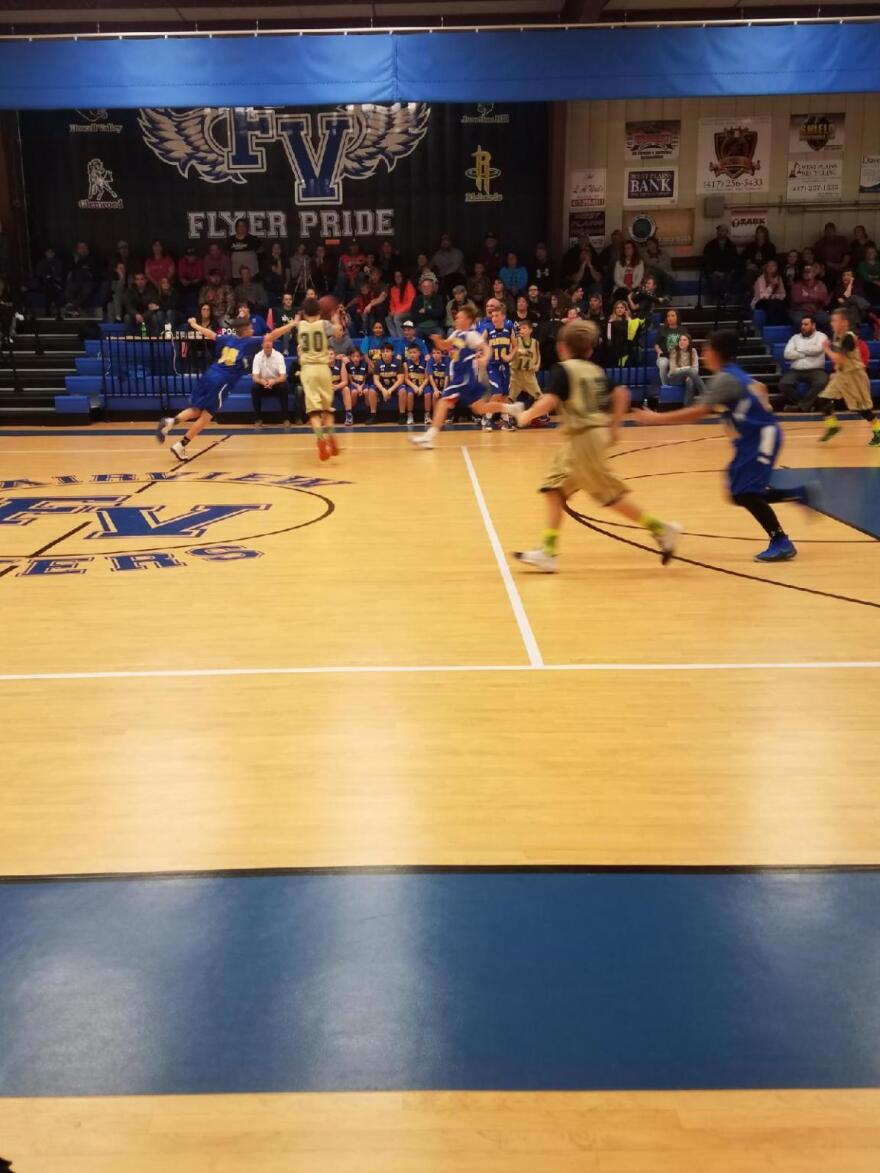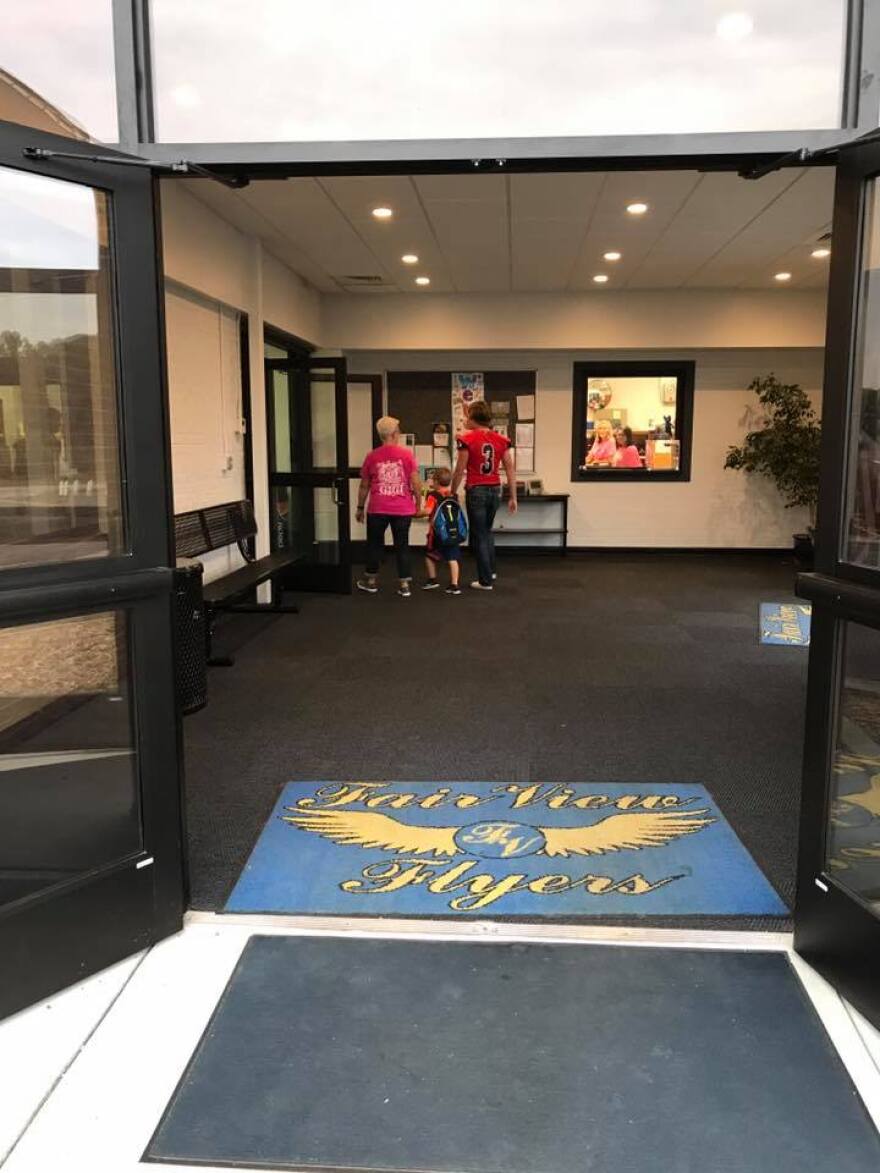Miles out a hilly, state highway near West Plains, parents are dropping their kids off near the doors of a K-8 public school where several staff members—including teachers—are wearing concealed firearms.
Fairview School is one of five, rural, satellite schools that feed into the West Plains High School (and it’s where this reporter's child has been attending for several years).
Neither the kids nor their parents know who’s carrying a gun here.
The policy has been in place for about five years. Aaron Sydow is the superintendent.
“Essentially what the sheriff’s department indicated to us is that: if they were sitting in their car, at the sheriff’s office, waiting for us to call, it would probably be eight minutes before they could get there,” Sydow said.
He said even before the 2012 Sandy Hook school shooting in Newtown, Connecticut, the school board had been talking about arming teachers. Sydow was principal back then.
“When Sandy Hook occurred in 2012, the district, several patrons were requesting that someone be able to carry at school. And they were pleading with me, as the principal on site, what were we gonna do about it,” he said.
But he told them his hands were tied. That’s because even though Missouri statue has long allowed school boards to decide who can carry guns in their schools, the school’s insurance provider,
“Our insurance provider, Missouri United School Insurance Council, said, ’If you do that and we find out, we will drop you,’” Sydow said.
Maneuvering to meet state, insurance requirements

The insurance company held that anyone carrying guns at school must be thoroughly trained.
And one indicator of a professional training is POST certification. POST stands for “Peace Officer Standards and Training,” and in Missouri, there’s a POST Commission in Jefferson City. It regulates the training of law enforcement officers. It’s part of the Missouri Department of Public Safety.
So the school worked with a nearby firearms training company, Shield Solutions, which created a training program specifically for school employees.
“Once this program was developed by this team of trainers, submitted to the state for POST certification, it received a POST control number—School Employees Firearms Training Course, you can’t get any more definitive than that,” Sydow said.
“It was approved by POST. Then the next step was presenting that to the school insurance provider, who basically signed off on it,” Sydow said.
Most parents found out that their kids’ teachers were already carrying guns by reading about it on the front page of the local paper on a Friday evening.
I ask Sydow if he feels there should have been more discussion, more debate before implementing the program. He says the school did its due diligence by posting the school board agenda before each meeting.
“And we had posted ‘School Safety’ as a topic of discussion, I think for a couple of months, prior to the approval of the program,” he said.
But no one really came to those meetings, he said.
I also ask Sydow why the school doesn’t use the money spent on training to hire an armed, school resource officer. He feels that gives potential school shooters a target.
“They’re gonna know that person’s schedule. They’re gonna know where they’re not gonna be, and come in a different place. They’re gonna come in while the resource officer is gone to lunch for 30 minutes,” Sydow said.

The rural-urban fault line on arming teachers
After the school shooting in Florida a few weeks ago, President Donald Trump suggested one way to make schools safer was to arm teachers.
There’s a fierce divide on this topic, and much of that divide appears to be along a rural-urban fault line.
“I think maybe in our area that students are more exposed to handguns in their home, rifles, things like that because of hunting,” said Laurel Driscoll, a fifth grade teacher at Fairview who also teaches math and health.
For example, many families still rely on venison or turkey harvested in these Ozarks woods to get them through the winter.
And Fairview School offers a hunter’s safety course for students.
When asked if she's concealing a gun right then, in the interview with KSMU, Driscoll does not provide a "yes" or "no" answer.
“I would have to tell you that we have signed a confidentiality agreement. Every teacher and staff member signs that confidentiality agreement. And so we are not at liberty to share that information,” Driscoll said.
Teachers and firearms: the training involved
A handful of other schools in southern Missouri also train through Shield Solutions to arm teachers.
Here’s how that plays out: school administrators ask for volunteers. Then the school board privately selects a group of staff members to go through the training.
Participants put in a 40-hour week of training with live fire, Sydow said. They learn how to clear a building, retain a weapon if someone tries to take it away, and administer first aid.
If they pass the hands-on exam at the end of that week, they can take their guns to school. Participants are also required to have follow-up training, Sydow said.
Springfield Public Schools: Arming teachers is 'unreasonable, unfair'

But in Springfield, Stephen Hall, a spokesman for Springfield Public Schools, says arming teachers is not going to happen there.
“We know that teachers do amazing work, and they are called upon to do more and more to address the emotional and the academic support that sets our students up for success. And so we really believe it is unrealistic, unreasonable, and unfair to take on the role of armed guard in the classroom,” Hall said.
Here’s where the urban-rural divide in our region has another sub-category: available resources.
“We are very fortunate at SPS to be served by a fantastic school police officer team,” said Hall.
The district has 23 SPS police officers, he said. Each high school in the district has an on-site, armed resource officer; the other schools have officers rotating as needed.
“And so we have our own dispatch center, and we have school resource officers that are assigned to our various buildings. And we have a presence in the building,” said Hall.
The school district’s police dispatch is staffed 24-7. And the district also works closely with the SPD and Greene County Sheriff’s Department.
But tiny, rural school districts often don’t have as large of a tax base or school foundations to draw funding from, and the number of officers who could respond to an emergency is far fewer out in the country.
Stephen Hall acknowledges that the issue of school safety is complex—and that what works best for Springfield schools might not be best for a more rural, geographically isolated school.
Back at Fairview School outside West Plains, a few students gather in the office to lead the Pledge of Allegiance over the intercom. They’re standing just inside a new, secure front entrance. And their community just raised $5,000 in two days to purchase barricades for classroom doors.
Their teacher, Laurel Driscoll, expresses a recognition that both rural and more metro-area teachers in the Ozarks share: school shootings have changed the profession of teaching in America.
“When we walk out onto the playground, and we lead our kids out onto the playground, it’s just second nature now for me to walk out first,” she said.
And there’s another factor, she says, that unites schools in our rural and metropolitan pockets: their dedication to safety, whatever that may look like from school to school.
“I would go to any length that I could to protect these children. Hopefully that never happens, but you know, I think every one of us would take every measure that we could to protect them,” Driscoll said.


